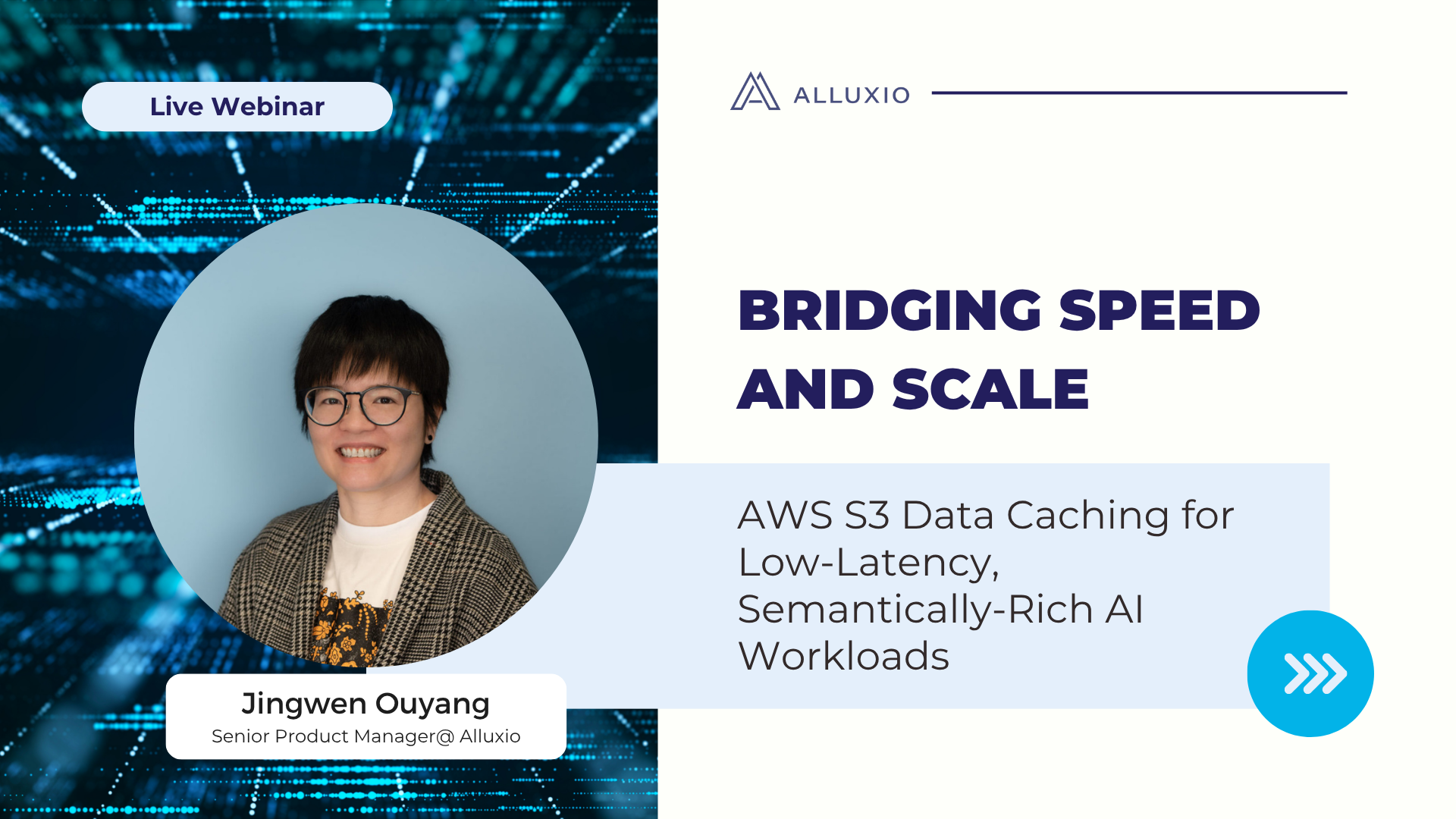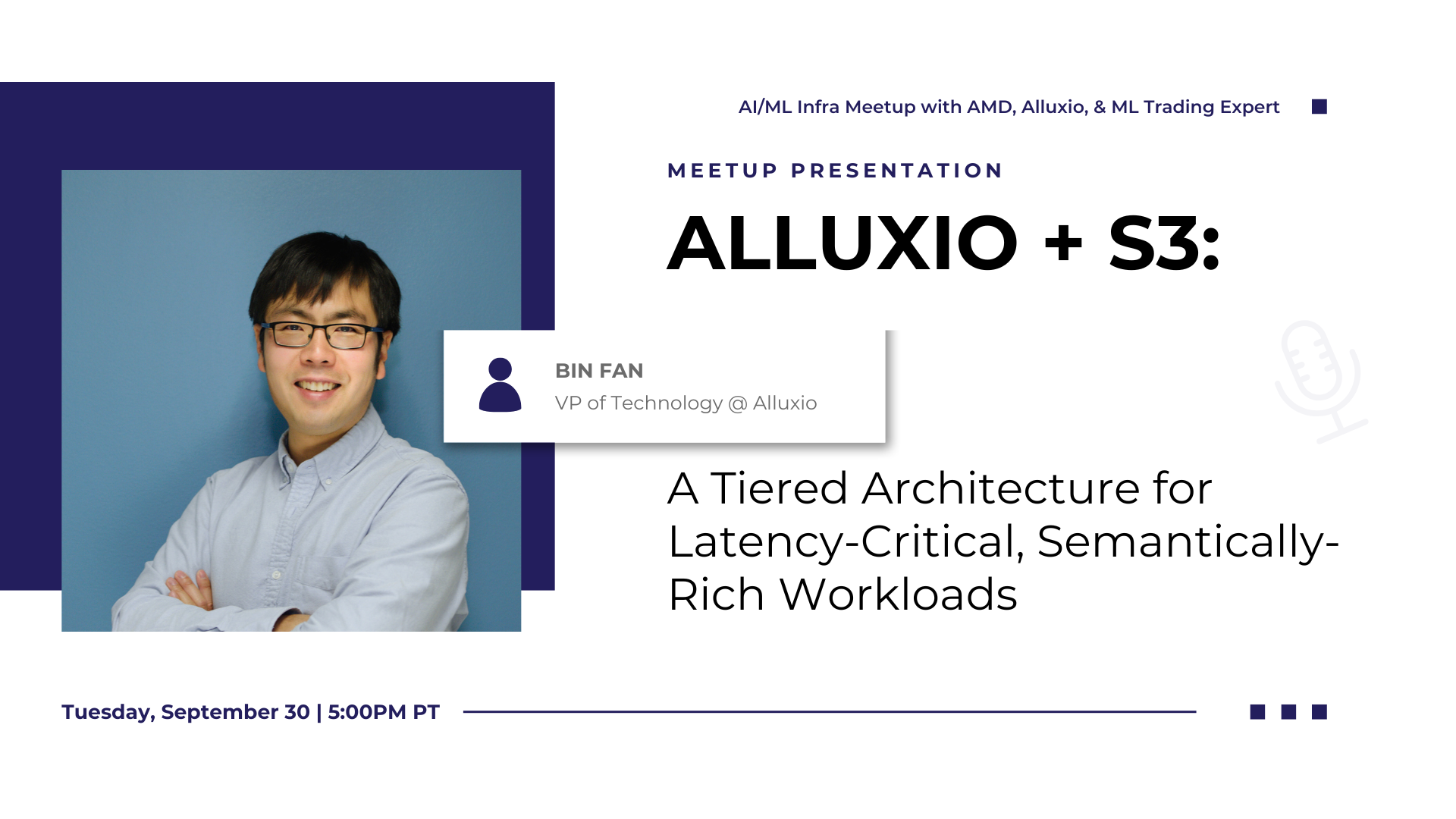Products
Architecting a Heterogeneous Data Platform Across Clusters, Regions, and Clouds
July 1, 2022
Alluxio foresaw the need for agility when accessing data across silos separated from compute engines like Spark, Presto, Tensorflow and PyTorch. Embracing the separation of storage from compute, the Alluxio data orchestration platform simplifies adoption of the data lake and data mesh paradigm for analytics and AI/ML. In this talk, Bin Fan will share observations to help identify ways to use the platform to meet the needs of your data environment and workloads.
越來越多的企業架構已轉向混合雲和多雲環境。雖然這種轉變帶來了更大的靈活性和敏捷性,但也意味著必須將計算與存儲分離,這就對企業跨框架、跨雲和跨存儲系統的數據管理和編排提出了新的挑戰。此分享將讓聽眾深入了解Alluxio數據編排理念在數據中台對存儲和計算的解耦作用,以及數據編排針對存算分離場景提出的創新架構,同時結合來自金融、運營商、互聯網等行業的典型應用場景來展現Alluxio如何為大數據計算帶來真正的加速,以及如何將數據編排技術用於AI模型訓練!
*This is a bilingual presentation.
Alluxio foresaw the need for agility when accessing data across silos separated from compute engines like Spark, Presto, Tensorflow and PyTorch. Embracing the separation of storage from compute, the Alluxio data orchestration platform simplifies adoption of the data lake and data mesh paradigm for analytics and AI/ML. In this talk, Bin Fan will share observations to help identify ways to use the platform to meet the needs of your data environment and workloads.
越來越多的企業架構已轉向混合雲和多雲環境。雖然這種轉變帶來了更大的靈活性和敏捷性,但也意味著必須將計算與存儲分離,這就對企業跨框架、跨雲和跨存儲系統的數據管理和編排提出了新的挑戰。此分享將讓聽眾深入了解Alluxio數據編排理念在數據中台對存儲和計算的解耦作用,以及數據編排針對存算分離場景提出的創新架構,同時結合來自金融、運營商、互聯網等行業的典型應用場景來展現Alluxio如何為大數據計算帶來真正的加速,以及如何將數據編排技術用於AI模型訓練!
*This is a bilingual presentation.
Videos:
Presentation Slides:
Complete the form below to access the full overview:
.png)
Videos
Bridging Speed and Scale: AWS S3 Data Caching for Low-Latency, Semantically-Rich AI Workloads

Amazon S3 and other cloud object stores have become the de facto storage system for organizations large and small. And it’s no wonder why. Cloud object stores deliver unprecedented flexibility with unlimited capacity that scales on demand and ensures data durability out-of-the-box at unbeatable prices.
Yet as workloads shift toward real-time AI, inference, feature stores, and agentic memory systems, S3’s latency and limited semantics begin to show their limits. In this webinar, you’ll learn how to augment — rather than replace — S3 with a tiered architecture that restores sub-millisecond performance, richer semantics, and high throughput — all while preserving S3’s advantages of low-cost capacity, durability, and operational simplicity.
We’ll walk through:
- The key challenges posed by latency-sensitive, semantically rich workloads (e.g. feature stores, RAG pipelines, write-ahead logs)
- Why “just upgrading storage” isn’t sufficient — the bottlenecks in metadata, object access latency, and write semantics
- How Alluxio transparently layers on top of S3 to provide ultra-low latency caching, append semantics, and zero data migration with both FSx-style POSIX access and S3 API access
- Real-world results: achieving sub-ms TTFB, 90%+ GPU utilization in ML training, 80X faster feature store query response times, and dramatic cost savings from reduced S3 operations
- Trade-offs, deployment patterns, and best practices for integrating this tiered approach in your AI/analytics stack
October 28, 2025
AI/ML Infra Meetup | AI at scale Architecting Scalable, Deployable and Resilient Infrastructure

Pratik Mishra delivered insights on architecting scalable, deployable, and resilient AI infrastructure at scale. His discussion on fault tolerance, checkpoint optimization, and the democratization of AI compute through AMD's open ecosystem resonated strongly with the challenges teams face in production ML deployments.
September 30, 2025
AI/ML Infra Meetup | Alluxio + S3 A Tiered Architecture for Latency-Critical, Semantically-Rich Workloads

In this talk, Bin Fan, VP of Technology at Alluxio, presents on building tiered architectures that bring sub-millisecond latency to S3-based workloads. The comparison showing Alluxio's 45x performance improvement over S3 Standard and 5x over S3 Express One Zone demonstrated the critical role the performance & caching layer plays in modern AI infrastructure.
September 30, 2025
